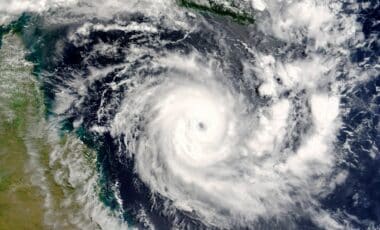Emergency services in New South Wales were deployed this week after torrential rains caused severe flooding along the Mid North Coast. More than 200 mm of rain fell within 24 hours in some areas, pushing rivers to record levels and prompting urgent evacuations.
Simultaneously, large parts of South Australia, Victoria, Tasmania and Western Australia continue to face drought conditions, with some regions recording their lowest autumn rainfall in decades. The dual crises highlight Australia’s exposure to highly localised and volatile weather systems.
Localised Weather Patterns Drive Extreme Rain in New South Wales
Heavy rainfall across the NSW Mid North Coast this week has been attributed to a combination of meteorological factors, including a stationary coastal trough and a cut-off low system in the upper atmosphere.
According to the Australian Bureau of Meteorology, these systems interact to create a vertical circulation, lifting moist air which condenses to form intense, prolonged rainfall.
The trough has been drawing humid easterly winds from the Tasman Sea, while the cut-off low—separated from the usual west-to-east airflow—remains slow-moving, allowing rain to accumulate over the same region. This has led to rivers such as the Manning River in Taree exceeding historic levels, with water overtopping banks and inundating nearby communities.
Flood risk has been amplified by already saturated soil. According to the Bureau, rainfall in March and April, partly linked to remnants of Tropical Cyclone Alfred, left the ground unable to absorb additional water. As a result, runoff has intensified, with widespread flooding reported across multiple towns.
A persistent high-pressure system in the Tasman Sea has also trapped the rain-bearing system in place, a typical setup for flooding along this stretch of coastline.
Drought Persists Elsewhere Despite Active Rain Systems
In stark contrast to the deluge in New South Wales, large parts of southern and western Australia remain critically dry. According to the Bureau of Meteorology, rainfall during March and April was well below average in South Australia, western Victoria and south-western Western Australia—with some locations experiencing record low levels.
This geographic disparity is not unusual. Australia’s vast size and complex topography mean rainfall can vary dramatically between regions. Moist air travelling from the east often fails to cross the Great Dividing Range, leaving inland and southern regions dry even as coastal areas flood.









